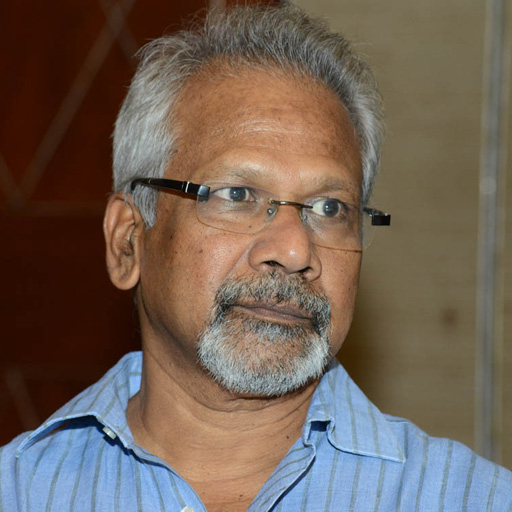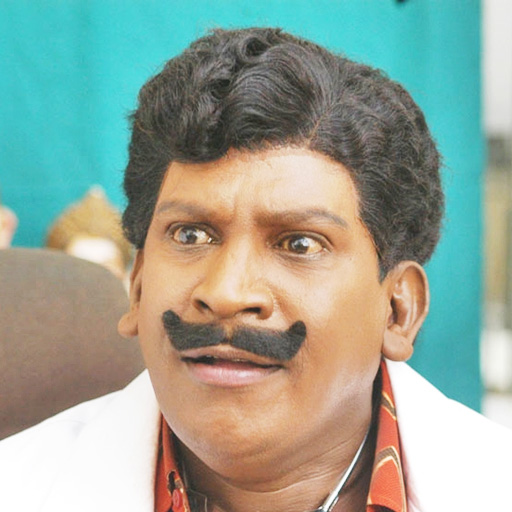The Villivakkam Lake Restoration Project is a water body restoration and adaptation project undertaken by Chennai Smart City Limited and Storm Water Drain Department, Greater Chennai Corporation.
Location and Context
The Villivakkam Lake is located in Zone 8 (Anna Nagar) of Greater Chennai Corporation. Villivakkam is situated between the industrial estates Ambattur, Padi, ICF, Perambur Loco Works, this place is populated mostly by the working-class people of Chennai. Over the years, SIDCO Industrial Estate and SIDCO Nagar have come up right on the banks and occupies around 20 acres of tank area. The Present area of the tank is about 36.34 acres of which CMWSSB will owns 11.5 acres and the rest 24.84 is with the GCC.
- Area belongs to CMWSSB – 11.5 acres
- Area belongs to GCC –24.84 acres
| PARTICULARS | UNIT |
| Total Area | 36.32 acres |
| CMWSSB Land | 11.5 acres |
| Water Spread area | 23.55 acres (95321.53sq.m) |
| Average depth of water | 3.50 m |
| Holding capacity | 0.07M.cum |
| Full Tank Level | +8.500 |
| Deepest Level | +4.000 |
| Inlet level near burial ground | +7.000 |
| Outlet at TVS canal | +8.500 |
| Debris and Desilting Quantity (for 23.55 acres) | 88,000 cum (32,000 + 56,000) |
| Formation of Foreshore Bund | 15,000 cum |
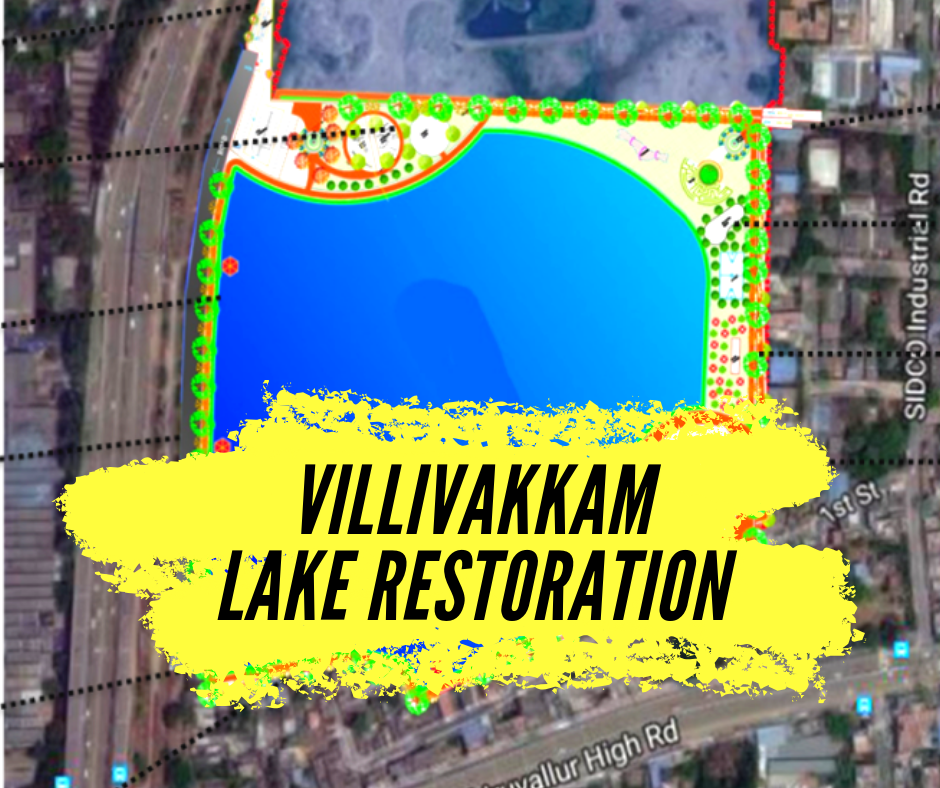
The Challenge of Villivakkam Tank
In 2005 floods, most of the water drained into the lake does not cause major problems. Due to the dumping of Metro Rail construction debris, Tank inlets and out has been blocked and this prevented rainwater and excess floodwater from being stored in it, resulting in the flooding of SIDCO Nagar for about 15 days during 2015 flood. Even at present, stormwater drains in the area are completely choked up with silt, garbage, and debris in many places.
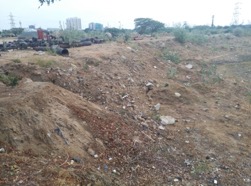
Satellite Image – Past & Present
The satellite image of Villivakkam will show contrasting status between 2001 and 2018.
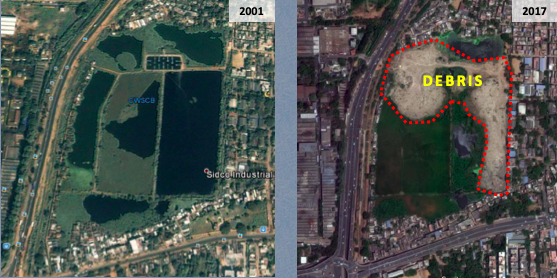
Linkages to Villivakkam Lake
The inflow into Villivakkam tank is from Korattur Eri via TVS Canal. The outlet from the lake is to Otteri Nallah. The path of the outlet drain is connected to the Kumarasamy canal.
Environmental & Social Issues
- Sewage Outfalls from the Pumping Station
- Sewage has directly let into the tank
- Weed growth and Eutrophication
- Encroached tank at the western side along the Padi flyover
- On the southern side, a residential colony resides i.e. Annai Sathya Nagar with semi pucca houses adjoining the compound wall of the tank.
Pollution Check
The restoration project involves keeping water quality sensors to check sewage intrusion.
Point Sources of Pollution
- Overflow pipe from pump station which carries sewage from surrounding areas
- Major BOD (6100mg/l) contribution to the lake is from this overflow pipe.
- Due to the inadequate capacity of the pump, the collected sewage are directly led to the Tank.
Non – Point Sources of Pollution
- Non-point sources of pollution open defecation, disposal of solid waste and CMRL debris.
The ground water condition in the area is:
- Water is containing color 10 Hu in two locations (Padi line and Inlet) in excess to the exhaustible limit.
- Chloride between 388mg/l to 758mg/l as against 250mg/l acceptable.
- Total dissolved Solid between 1424mg/l to 2088mg/l as against 500mg/l
- Calcium between 34mg/l to 161mg/l as against 75mg/l
- Magnesium found more than 30mg/l in all samples
- Ammonia 0.84 mg/l found in padi line sample.
- Heavy metals like Mercury, Cadmium, Total Arsenic, Lead, Zinc, Nickel, Total chromium were absent in all four samples.
- Presence of Total coliform and fecal coliform in three sample (Padi line, inlet, Annai Satya Nagar) due to presence of sewage
The surface water sample results are:
- pH range from 6.8 to 7.8 as against 6.5 to 8.5 is acceptable.
- Inside tank sample contains BOD 86 mg/l and COD 423 mg/l indicates the presence of Sewage.
- The presence of high Total coliform and fecal coliform is also observed.
- Sewage outfall point contains, BOD 20 mg/l and COD 98mg/l is observed
- Accumulation of industrial sewage observed on wheels India.
- Zinc range from 0.12to 0.39 as against 5mg/l is acceptable.
- Heavy metals and pesticides were absent in all samples.
- From the Sewage collection well, overflow of sewage entering into the Lake is observed
- Results Clearly indicate the tank receives only untreated sewage.
- Mitigation measures to bring back the water quality for outdoor bathing use.
Based on these conditions on the ground the SWD department came up with the design to serve as a high-quality public space that will also serve as a local adaptation project.

Components of the Proposed Design
- Suspension Bridge
- Recreational & Leisure
- Entrance Plaza
- Adult’s Gym
- Refreshment Block
- Multipurpose Lawn
- Landscaping
- Park Entrance & Parking
- Food Court
- Scatting Ring
- Basket Ball Court
- Maze
- Tunnel
- Open Air Theatre
- Walking & Viewing Bridge

According to the new design:
- A suspension bridge will be created on top of the lake to serve as a viewing gallery.
- Tank Bund Road will be proposed parallel to the TVS canal – about 9000 cum of de-silted material will be used
- The width of proposed road is 10m and the length is 600m at the RL 11.00m.
- At present, the encroachment PAF’S 77 was present parallel to the TVS canal (west side of the tank).
- Encroachment will be removed
The area allocated for the various components are:
| S.NO | Land Use | Area(Sqm) |
| 1 | Water spread area | 73447.21 |
| 2 | Parking | 2330.24 |
| 3 | Oat | 5611.65 |
| 4 | Entrance plaza | 242.62 |
| 6 | Scatting ring | 298.27 |
| 7 | Food court | 100.00 |
| 8 | Back entry | 242.60 |
| 9 | Basketball court | 385.75 |
| 10 | Maze | 554.29 |
| 11 | Tunnel | 166.48 |
| 12 | Multipurpose lawn | 505.99 |
| 13 | Kids play | 720.00 |
| 14 | Outdoor gym | 386.65 |
| 15 | Toilet | 18.00 |
| 16 | Walkers pathway and Bund | 17017.58 |
| 17 | Green space | 882.39 |
| Total | 102909.72 | |
| 18 | Formation of New Road along TVS Canal | 5000.00 |
| Grand Total | 107909.72 |
The project is expected to be completed by End of 2019. Once completed the project will no doubt be one of the best Urban Space developments in India.
Technical Advice by BARC
The Villivakkam Lake Restoration will also actively see the involvement of one of the premier Indian science institutions namely the Bhabha Atomic Research Center.
As a pilot project, Chennai Corporation will use BARC’s hybrid granular sequencing batch reactor for wastewater recycling and blend it into the lake. The 5-million liters a day (5 MLD) capacity sewage treatment plant near the lake would be upgraded with advanced technology. The recycled wastewater would be released into the lake. This would make the water body perennial and lead to an increase in the groundwater table in the surrounding areas.
The Hybrid Granular SBR Treatment (GST) is a compact biological treatment method for effective removal of contaminants from domestic and industrial wastewaters. It makes use of the natural microbes present in the wastewater for removing contaminants. The microbial growth is predominantly in bio-beads comprising of biomass particles (biofilms and granules). Bio-beads (i) achieve high biomass levels, (ii) simplify separation of biomass from treated wastewater and (iii) decrease the load of pollutants to acceptable levels. The bio-beads produced during wastewater treatment are a source of C, N and P and a fertilizer-supplement in organic farming. The value of the resources recovered from wastewater treatment plants i.e. treated wastewater and fertilizer-supplement, can partly recover the OPEX. The GST uses the unique features of the sequencing batch reactor (SBR) and bio-beads for treating wastewater in a single tank system without secondary clarifiers. It enables building compact effluent and sewage treatment plants with smaller land footprint and lower costs as compared to other methods. This process does not involve chemical addition for removing nutrients & provides odor-free sewage treatment plants.

